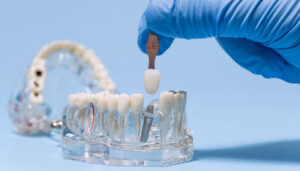Of all of the health concerns you face today, gum disease may be the most pervasive and under-reported. The Centers for Disease Control and Prevention reports that almost 50 percent of American adults suffer from some form of it. Depending on what stage of progression your gum disease is in, you may require surgical intervention in order to halt the spread and reverse the effects.
Detailing Traditional and Laser Surgeries
Laser gum surgery has increased in popularity in recent years due to its many benefits. Using a highly-attuned laser to target and destroy diseased gum tissue, Dr. Leo A. Tokarczyk is able to leave the surrounding healthy tissue untouched. Not only does this localize any pain or discomfort you may feel (which is typically minor at most), but it also helps to promote the growth of new healthy jaw bone. Very little manual manipulation of your gums is required, decreasing the potential for postoperative pain and limiting healing times.
In contrast, traditional gum surgery is more invasive, requiring incisions being made in your gums so that Dr. Tokarczyk can get to the diseased tissue that is affecting you. Tissue grafts may also be needed in order to help replace what has been damaged. Sutures are required to close up the surgical site, and packing may also be needed in order to limit bleeding. With these added measures, you can expect a longer recovery period.
Which Is Right for You?
You might compare these two methods side-by-side and wonder why anyone would choose to go the traditional route. While more people are choosing to explore laser surgery, traditional treatments are effective if you fail to qualify as a candidate for a laser procedure. Some of the factors that might affect your candidacy include
· Your age and lifestyle
· Your medical history
· Any current ailments you may be suffering from
Whatever form of surgical gum treatment you need, Dr. Tokarczyk can provide it. With our help, you will be back to sharing a radiant smile with the world again in no time at all. Contact us today to schedule an appointment in which we can discuss your treatment options.





